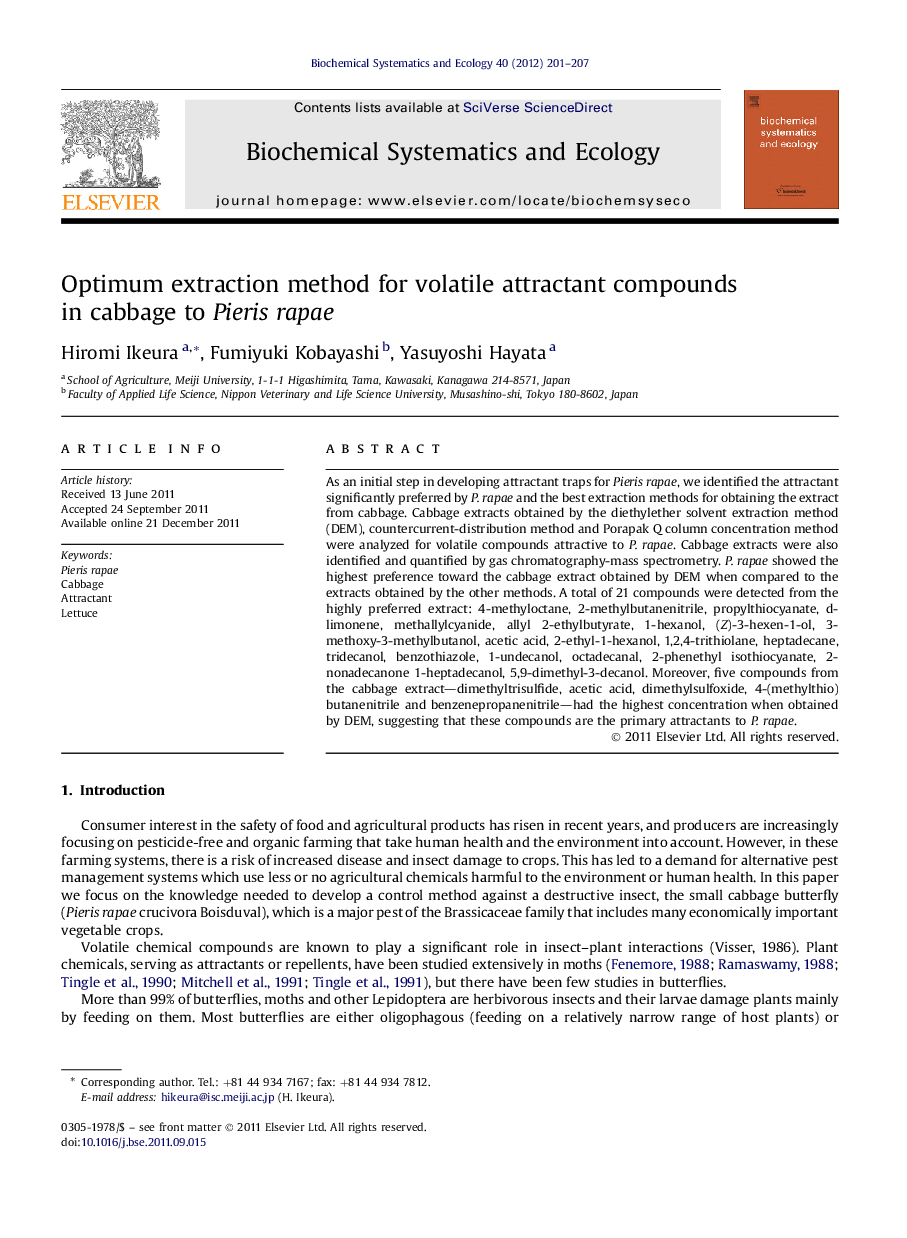| Article ID | Journal | Published Year | Pages | File Type |
|---|---|---|---|---|
| 1351867 | Biochemical Systematics and Ecology | 2012 | 7 Pages |
As an initial step in developing attractant traps for Pieris rapae, we identified the attractant significantly preferred by P. rapae and the best extraction methods for obtaining the extract from cabbage. Cabbage extracts obtained by the diethylether solvent extraction method (DEM), countercurrent-distribution method and Porapak Q column concentration method were analyzed for volatile compounds attractive to P. rapae. Cabbage extracts were also identified and quantified by gas chromatography-mass spectrometry. P. rapae showed the highest preference toward the cabbage extract obtained by DEM when compared to the extracts obtained by the other methods. A total of 21 compounds were detected from the highly preferred extract: 4-methyloctane, 2-methylbutanenitrile, propylthiocyanate, d-limonene, methallylcyanide, allyl 2-ethylbutyrate, 1-hexanol, (Z)-3-hexen-1-ol, 3-methoxy-3-methylbutanol, acetic acid, 2-ethyl-1-hexanol, 1,2,4-trithiolane, heptadecane, tridecanol, benzothiazole, 1-undecanol, octadecanal, 2-phenethyl isothiocyanate, 2-nonadecanone 1-heptadecanol, 5,9-dimethyl-3-decanol. Moreover, five compounds from the cabbage extract—dimethyltrisulfide, acetic acid, dimethylsulfoxide, 4-(methylthio) butanenitrile and benzenepropanenitrile—had the highest concentration when obtained by DEM, suggesting that these compounds are the primary attractants to P. rapae.
► Pieris rapae preferred the cabbage extract by diethylether solvent extraction method. ► A total of 21 compounds were detected from the highly preferred cabbage extract. ► The primary attractants to P. rapae are characteristic in Brassicaeae plants.
